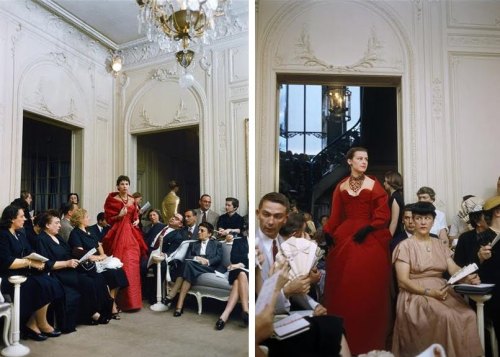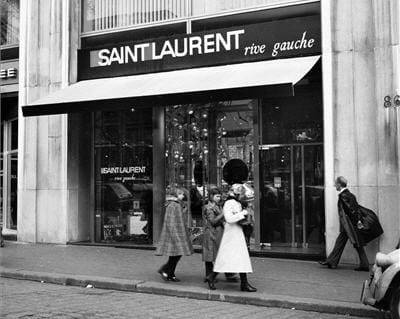Last month a protest was held on the famous Saville Row. Several hundred people took to the street to protest the encroaching of Abercrombie & Fitch upon one of the most Venerable Institutions of the Fashion Industry. Unfortunately, this protest - or the cause of it, rather - heralds the final chapter of the Age of Couture.
This all started at the end of the 19th century, with a man named Charles Dana Gibson. Gibson was a turn of the century illustrator, and while he didn't invent the styles of the 1890s and 1900s, he is widely credited with popularizing the look we now know as the "Gibson Girl". This might not have been revolutionary. It might have been simply the latest in the series of fashionable changes to Victorian dress, except for one thing: for the first time in history it became fashionable for women to wear separates.
Before then, stylish ladies had worn dresses almost exclusively. This had left dressmaking in the exclusive realm of individual tailors and seamstresses, as the corseted and bustled figures made standardized sizing and mass-manufacturing impossible. The only people who bought pre-made clothing were sailors and other workmen who didn't have any family to make them clothes. This was looked down upon by the upper classes. While Sears-Roebuck and others also produced clothing for their catalogues, these, too, were considered déclassé.
With the arrival of these fashionable separate skirts and blouses (then known as shirtwaists), standardized measurements and mass production became not only a possibility but a reality. Manufacturers began popping up all over major cities - you may have heard of the Triangle Shirtwaist Factory Fire.
Ready-to-wear slowly pushed it's way to the forefront of culture and society, and got special boosts with each of the world wars. However, couture was still king in the fashionable circles. Wealthy women still traveled to Paris each season to purchase new gowns, dresses, suits, etc.
 |
| A Dior Haute Couture Show, 1950s |
The next part of the story begins on October 23rd, 1957. Christian Dior, the toast of Paris, dies of a heart attack while on vacation in Montecatini, Italy. In his wake, Yves Saint-Laurent is tapped to take over the fashion juggernaut that is Dior. However, after only a few years, the investors butt heads with the young designer purposefully fail to have him excused from his military conscription. After several years of struggles with military service, doctors, and drugs, Saint-Laurent pulled himself together and in 1966 announced a ready-to-wear line. While other designers also had prêt-à-porter lines in the works, YSL is greatly credited with being the first due to his strong ideas on the subject of democratizing fashion. Saint-Laurent's Rive Gauche stores were a huge success, and this spelled the beginning of the end for couture.
It's interesting to note that it was around this time that the miniskirt came into fashion. This is widely considered to have been the last major fashion trend. Nothing since has been so widely pervasive as the miniskirt, and it heralded the end of institutionalized fashion, where Parisian couturiers dictated the styles to the masses.
Nowadays, design companies lose money on their couture lines, and they are becoming less and less prevalent as the shows become too expensive to produce and as more and more of the artisans and craftspeople who provided lace, feathers, beading, and all of that to the design houses fold due to economic hardship. In spite of this, Saville Row has remained a bastion of bespoke against the rising tide of ready-to-wear. The tailors and seamstresses of Saville Row resent that a fast fashion company such as Abercrombie & Fitch would trespass onto what is effectively the Vatican of tailoring, and consider it both disrespectful and an economic threat.
However, will their cries be ignored? Will the suit-makers of Saville Row be swallowed up by fast fashion the way Barnes & Noble or Starbucks swallowed up so many businesses before them? Will centuries of experience and incomparable quality be replaced by lower prices and quick turn-around times? I believe they will, sadly. They simply cannot compete in a society that holds price above all other aspects of a product. I hope they'll stick around for a while yet, and at the very least live to preserve their wisdom for posterity.








That's wonderful I didn't know about all this until the moment I saw this blog entry of yours here. And I got a question for you. Do you happen to know how to protect your personal posts from being stolen without notifying you about it?
ReplyDelete